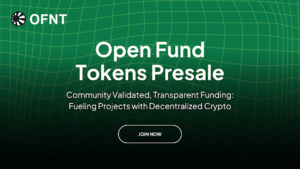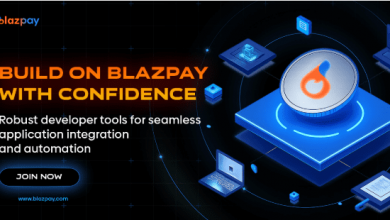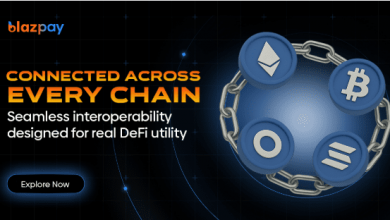OpenFundNet Redefines Crypto Participation as XRP, Kaspa, and Cardano Maintain Traditional Roles

A New Era of Active Engagement Emerges
As the decentralized web matures, a transformation is underway in how users engage with blockchain platforms. OpenFundNet, a newly launched crowdfunding protocol, is drawing attention for offering a model that goes beyond holding, staking, or mining. Instead, it positions users as essential contributors—validators, funders, and creators—with token rewards tied directly to participation. This model stands in contrast to more established cryptocurrencies like XRP, Kaspa, and Cardano, where user roles have largely been built around network support and token economics.
Traditional Platforms Centered Around Infrastructure
For years, platforms such as XRP, Kaspa, and Cardano have led in building decentralized infrastructure. XRP focuses on facilitating fast, low-cost cross-border payments, particularly within the banking sector. While its consensus protocol involves selected validators, the average user’s interaction remains minimal—primarily as a sender or holder of tokens.
Kaspa, with its high-speed blockDAG structure, caters to miners who support network security and throughput, but participation is still limited to technical contribution via mining rigs and hardware operations. Cardano, known for its academic development style and layered architecture, offers more democratic features through proof-of-stake and treasury proposals. However, its reward distribution remains closely tied to token weight and long-term staking, with limited short-term or task-based engagement.
$OFNT Token Sale | Buy $OFNT Now!
OpenFundNet’s Contribution-Based Ecosystem
OpenFundNet introduces a framework in which user participation becomes the core engine of value creation. Instead of rewarding users for how much they hold or how long they stake, the platform distributes tokens based on what participants do. Project creators propose milestone-based initiatives, backers choose to fund projects in stages, and validators evaluate and score campaigns using both data and dialogue with the community. This creates a cycle where each action feeds back into the network’s overall reliability and growth.
Unlike many decentralized platforms that rely on technical participation, such as node operation or delegation, OpenFundNet opens the door to non-technical users who still want to contribute meaningfully. Those who engage with the platform by funding credible ideas or reviewing projects transparently earn tokens not as a passive dividend, but as a reflection of involvement and trust.
Tokens That Do More Than Sit in Wallets
On OpenFundNet, tokens are not only financial assets—they are tools for platform influence. Once earned, native tokens can be staked for passive rewards, but also used for governance voting and project validation. This creates a dynamic in which reputation is built through active contribution rather than sheer ownership.
In contrast, XRP primarily functions as a medium of exchange. Kaspa’s mining ecosystem is deeply performance-based but lacks a flexible governance layer for casual users. Cardano offers voting on community funds and development proposals, but participation remains closely tied to ADA holdings and the ecosystem’s long proposal cycles.
Building Trust Through Transparent Validation
One of the most distinctive elements of OpenFundNet is its validator system, which relies on community scoring and direct engagement with project pages and chat feedback. Validators are not anonymous algorithms or passive delegates—they are active users with a stake in the credibility of the projects they evaluate.
Their input influences visibility, milestone payouts, and long-term platform health. This participatory approach addresses long-standing concerns in Web3 regarding transparency and project legitimacy, offering a new path for platforms where trust is earned through interaction.
Global Access With Multi-Chain Interoperability in Sight
While OpenFundNet currently operates its own native ecosystem, future plans suggest integration with major layer-1 blockchains, including XRP Ledger, Kaspa, and Cardano. This would allow backers to fund projects using familiar tokens while leveraging each coin’s unique advantages. XRP’s speed and cost efficiency could streamline global donations. Kaspa’s rapid confirmation time could support real-time milestone payouts.
Cardano’s identity tools and governance structures might enhance validator transparency and trust scoring. Such integration would enable OpenFundNet to function as a value layer across several blockchains, rather than remaining siloed.
Shifting the Definition of Participation in Web3
The growing interest in OpenFundNet points to a broader trend in the decentralized economy—a shift from speculation to contribution. In earlier stages of crypto adoption, users were mostly incentivized to buy and hold tokens, mine blocks, or passively stake coins. Now, with platforms like OpenFundNet, the definition of value creation is expanding to include time, trust, validation, and grassroots funding.
This evolution suggests that in the next wave of blockchain platforms, user participation will no longer be measured only by capital input or computational power but also by community interaction, idea evaluation, and social contribution. While XRP, Kaspa, and Cardano continue to serve vital roles in the crypto infrastructure landscape, the rise of task-based, community-centered platforms signals a new chapter in decentralized engagement.

Source: OpenFundNet Redefines Crypto Participation as XRP, Kaspa, and Cardano Maintain Traditional Roles





